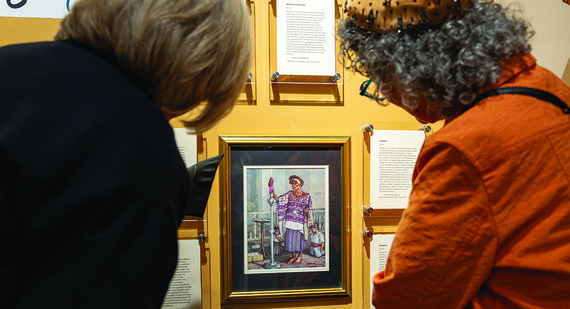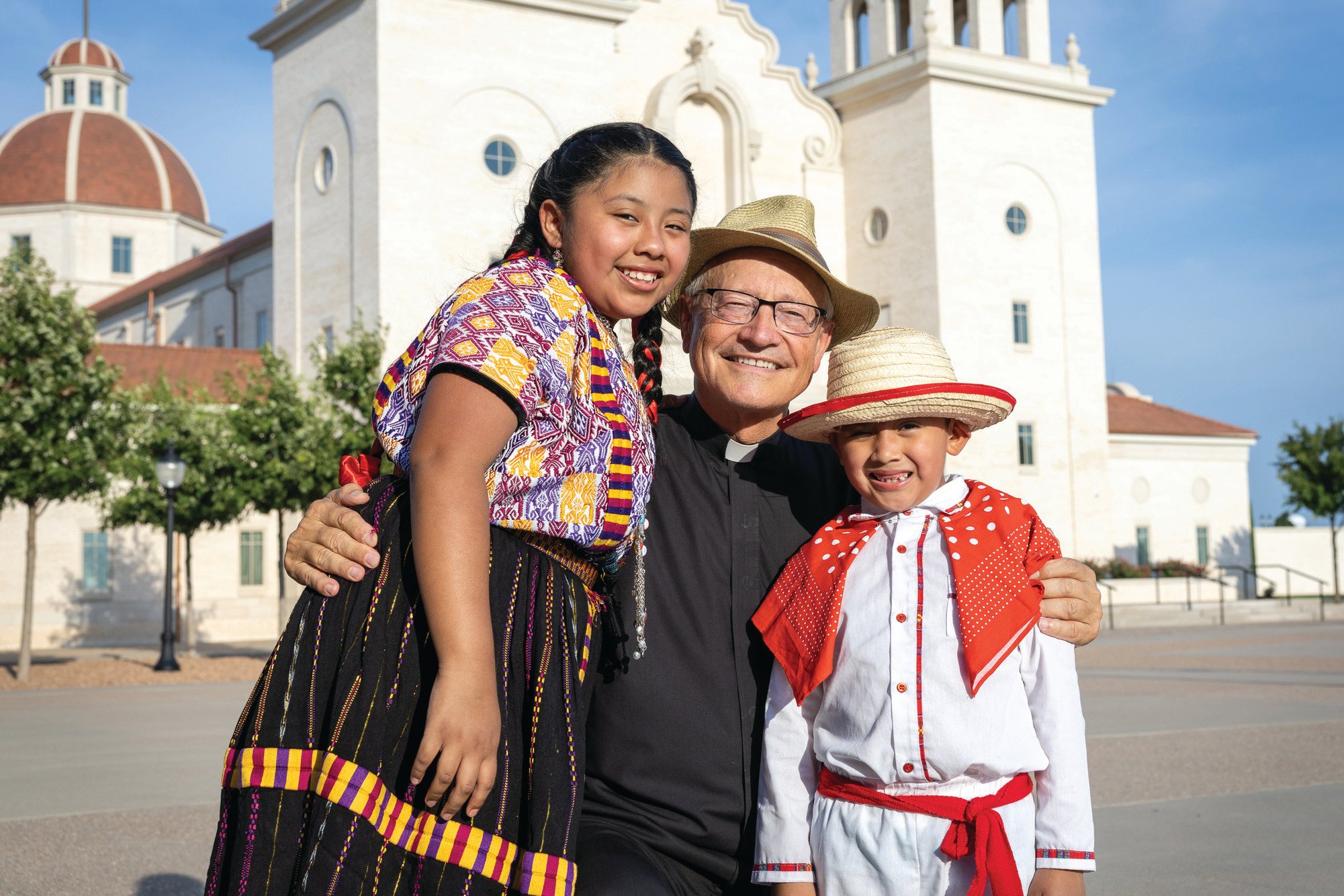-
 August 14, 2025
August 14, 2025
Guatemalan culture honored at Bl. Stanley Rother Shrine
What makes a culture? What are its defining aspects? If someone were to pose this question to a room full of people of varying ages and backgrounds, many would likely mention clothing, music, art, cuisine and similar elements.
Defining what constitutes an “established culture” can be challenging, although some may simply suggest it as the way of life shared by people in a particular community.
By that measure, Guatemala has much to offer.
On July 26, a new exhibit exploring the rich cultural history and legacy of Guatemalan clothing – traje, as it is known locally – opened to the public at the Blessed Stanley Rother Shrine Museum in Oklahoma City. The exhibition features the work of Guatemalan artist Carmen Lind Pettersen.
Seven prints of Pettersen’s artwork, along with a rare copy of her book “The Maya of Guatemala: Life and Dress,” showcase the traditional attire of Guatemala’s Indigenous Mayan people.
Now the largest collection of Pettersen’s work in the United States, the exhibit further enhances the mission of the Blessed Stanley Rother Shrine Museum, serving as a beacon of faith while honoring both the legacy of Blessed Stanley Rother and the Guatemalan culture he so devotedly served.
“These prints really are an invaluable documentation of what traditional dress looks like in Guatemala, even today,” Father Don Wolf, rector of the Blessed Stanley Rother Shrine, said during a private event the night before. “Nowadays, it is common to see men (in Guatemala) trading their traditional purple, embroidered pants for jeans, which are more economically practical. Women, for the most part, still make and wear traditional clothing such as elaborately embroidered skirts and blouses.”
The celebration of Guatemalan culture at the shrine extends beyond the exhibit. Each year, Deacon Rob Blakely, the shrine’s director of pilgrimage, travels to Guatemala and returns with more than mere memories.
“I take a suitcase with me and bring back loads of merchandise for the gift shop, all handmade by Indigenous Mayan artisans,” Blakely said. “It’s all hand-stitched and long-lasting.”
The gift shop’s collection includes embroidered purses, pillowcases, keychains, bracelets and other handcrafted treasures.
Also on July 26, the shrine hosted a Marian procession across the grounds and up Tepeyac Hill. A Mass followed in the church, during which a beam of sunlight dramatically illuminated the statue of Blessed Stanley above the tabernacle; fitting as people at the shrine were celebrating the feast of its patron that weekend, July 26–27. After Mass, attendees gathered in the square for fellowship, food and entertainment provided by traditional Guatemalan dancers.
On July 27, all Masses at the shrine honored the feast day of Blessed Stanley Rother, which was observed the following day, July 28, at other parishes in Oklahoma. After the 9 a.m. Mass, pilgrims had the opportunity to meet two authors: María Scaperlanda, author of “The Shepherd Who Didn’t Run,” a biography of Blessed Stanley, and Sue Rother Bond, Blessed Stanley’s cousin and author of “Blessed Stanley Rother,” a children’s book.
Both hosted book signings where visitors could purchase signed copies and browse the new exhibit and gift shop offerings.
So, what defines Guatemalan culture? While traje, art and cuisine certainly play vital roles, Blessed Stanley Rother might have said the people themselves are the heart and soul of the culture. In the documentary An Ordinary Martyr, he called the Tz’utujil people “exceptional.”
Today, the beauty and spirit of Guatemala are more present than ever in Oklahoma, bridging communities, honoring faith and continuing the legacy of a priest who gave his life in service to a people he loved.
Emma Bowman is a freelance writer for the Sooner Catholic.
Photo: (Above) A new collection preview was held July 25 at the Bl. Stanley Rother Museum in Oklahoma City. The collection, Maya of de Guatemala, features Guatemalan artist Carmen Lind Pettersen. Her watercolors display the garments of the Tz’utujil people such as sashes and huipiles telling the story of the people’s resilience and creativity. Photos Chris Porter/Sooner Catholic.

 Bl. Stanley Rother’s Feast Day, July 28, was celebrated with activities on July 26 and 27 at the Bl. Stanley Rother Shrine. Some of the festivities on July 26 included a Marian procession, Mass and performances from Guatemalan dancers. Photos Chris Porter/Sooner Catholic.
Bl. Stanley Rother’s Feast Day, July 28, was celebrated with activities on July 26 and 27 at the Bl. Stanley Rother Shrine. Some of the festivities on July 26 included a Marian procession, Mass and performances from Guatemalan dancers. Photos Chris Porter/Sooner Catholic.
